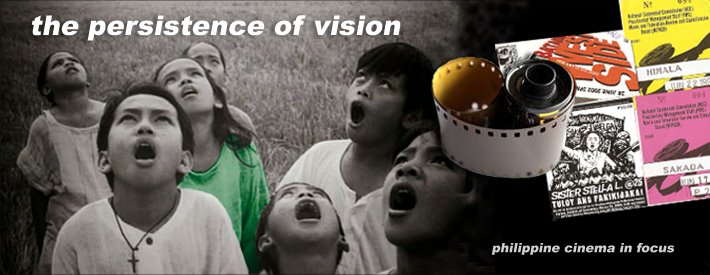
The best and most promising local filmmakers participated in the amBisyon 2010 project of the ABS-CBN News Channel 27. They created 20 short films that dealt with 10 major issues in the country. These short films are meant to provoke viewers to think… about social change… about the future of the country… about the coming May 10 elections…
amBisyon 2010 had its television premiere last Friday, April 9 at 6:00 pm on ANC Channel 27. It was a fantastic start. The first part showed two excellent short films about poverty and two very good short features about education. I haven’t seen the other four parts but I have a feeling that the first part is the must-see segment.
Part One contains Ditsi Carolino’s Lupang Hinarang Sa Sumilao, an eye-opener on the issue of land reform. The short film is an abbreviated version of her magnificent documentary Lupang Hinarang. The best of the lot is Brillante Mendoza’s Ayos Ka. It is a music video showing scenes of poverty. I had a bad case of LSS after watching the video. The rap song Ayos Ka by Mandarhyme has an infectious melody with lyrics dealing with the positive side of living in the Philippines. However, the images tell a different story. These images contain some of the most horrifying scenes captured in a Mendoza film. I still shudder at the brutal scene showing a horde of istambays at the street corner. I hope the youth get to see this film and the Carolino feature. Also included in Part One are the films of Jerrold Tarog and Ellen Ramos.
Catch the replay of Part One of AmBisyon 2010 on Thursday, April 15 at 10:30 pm on Studio 23.
******
Schedule of television premieres of the other 16 short films (ie. four short films per segment):
ABS-CBN News Channel 27:
Part 2 (April 16, Friday 6:00 PM – 7:00 PM)
Part 3 (April 23, Friday 6:00 PM – 7:00 PM)
Part 4 (April 30, Friday 6:00 PM – 7:00 PM)
Part 5 (May 7, Friday 6:00 PM – 7:00 PM)
Replays on ABS-CBN News Channel 27:
Part 2 (April 17, Saturday 8:00 PM – 9:00 PM)
Part 3 (April 24, Saturday 8:00 PM – 9:00 PM)
Part 4 (May 1, Saturday 8:00 PM – 9:00 PM)
Part 5 (May 8, Saturday 8:00 PM – 9:00 PM)
Replays on Studio 23:
Part 1 (April 15, Thursday 10:30 PM - 11:30 PM)
Part 2 (April 16, Friday 11:00 PM - 12:00 AM)
Part 3 (April 23, Friday 11:00 PM - 12:00 AM)
Part 4 (April 30, Friday 11:00 PM - 12:00 AM)
Part 5 (May 7, Friday 11:00 PM - 12:00 AM)

 A heartwarming sight was seeing film industry veterans getting awards from the Manunuri ng Pelikulang Pilipino. Acting icons Rustica Carpio and Anita Linda thanked Mendoza for getting them. Another veteran performer Lou Veloso was honored for his excellent performance in the film Colorum.
A heartwarming sight was seeing film industry veterans getting awards from the Manunuri ng Pelikulang Pilipino. Acting icons Rustica Carpio and Anita Linda thanked Mendoza for getting them. Another veteran performer Lou Veloso was honored for his excellent performance in the film Colorum.





